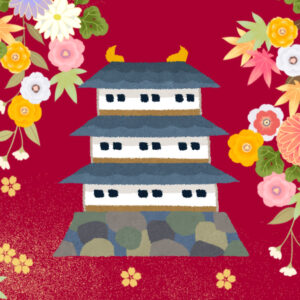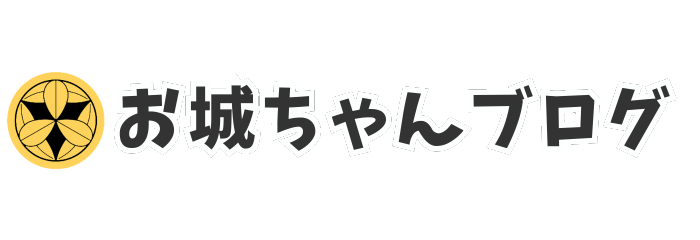【AD】
Hi, this is Oshiro chan!
Have you ever visited shrines or temples in Japan?
In fact, the etiquette differs depending on whether you are visiting shrines or temples.
Do you know what kind of things you have to be careful when you visit shrines or temples?
Please read this article to the end to learn about the differences between Japanese shrines and temples visitation methods.

I am ashamed to say that there are many Japanese who do not know about it...!(whisper)
How to visit Japanese shrines
One "sigh" before passing through the Torii gate
The sighing before passing through the Torii gate is said to release evil spirits before worshipping the gods.
Bow in front of the Torii gate then stop under the gate and bow again
The Torii gate is considered the boundary between the "sacred place" and the "human world".
For this reason, Torii gates have the effect of driving away evil spirits.
Once in front of the Torii gate, bow and stop.
There you should bow again to ward off evil spirits before passing through.
At this time, you should not pass through the center of the Torii gate. Try to go through the side of it.
Avoid walking in the center of the approach to the temple
As I mentioned above, "do not pass through the center of the Torii gate," but also "do not pass through the center of the approach to the shrine".
The reason for this is that the center of the Torii gate or approach is the path of the gods.
Cleanse your hands
If there is a Chozuya (water closet), please purify your hands and mouth by water before visiting the shrine.
With a ladle full of water, lightly run the water through the left hand, right hand, mouth, left hand, and ladle in that order.
It is a good idea to get out a towel or handkerchief in advance because you will be in a hurry if your hands get wet.
Please be sure to check before doing so, as it may be prohibited due to the covid-19.
Ring the bell and make a monetary offering at the main shrine
If there is a bell above the money box, ring the bell.
The bell is meant to ward off evil and purify worshippers.
The sound of the bell is also meant to let God know "I am here".
After ringing the bell, put your money in the offering box.
Do not throw money into the box, but place it in quietly.
How much?
It is common to make a 5 yen donation, but there is no set amount of money to make a donation.
Some people don't have 5 yen coins so some people donate 10 yen, some donate 100 yen.
※Reasons to donate 5 yen
In Japanese, 5 yen is called Goen.
In English, it is called "relationship".
We often donate 5 yen, rhyming with "May you have a good relationship with someone".👍
Praying is done with "Nirei-Nihakushu-Ichirei"
After making a monetary donation, we will pray.
Nowadays, it is common to pray with "Nirei-Nihakushu-Ichirei".
Nirei = 2 rounds of bow
Nihakushu = 2 rounds of applause
Ichirei = 1 round of bow
How to do it
- Straighten your posture and bow deeply twice. (2 rounds of bow)
- Clap your hands twice at chest level. At this point, the key is to pull the right hand down slightly and shift it to strike. (2 rounds of applause)
- Put your hands together properly and pray with all your heart.
- Finally, another deep bow. (1 round of bow)
Each shrine may do things a little differently. In that case, please try to follow the way of that shrine.

Don't worry.
If it is difficult, just ring the bell and clap your hands twice. It'll be OK!
How to visit Japanese temples
Gassho worship in front of the gate
When you come to the gate pray with your hands together and take a bow at once.
Please note that we do not clap hands at the temple.
Try to go through the side under the gate, not the center.
This is because the center is the path of the Buddha.
Women should straddle the threshold from the right foot, and men from the left foot, avoiding stepping on the threshold.
Cleanse your hands
If there is a Chozuya (water closet), please purify your hands and mouth by water before visiting the temple.
With a ladle full of water, lightly run the water through the left hand, right hand, mouth, left hand, and ladle in that order.
(The same way we did at the shrine.)
It is a good idea to get out a towel or handkerchief in advance because you will be in a hurry if your hands get wet.
Please be sure to check before doing so, as it may be prohibited due to the covid-19.
Go to the main hall
There are three things to do when you arrive at the main hall.
Make a monetary donation
First, put your money in the money box.
Do not throw money into the box, put it in quietly.
Burn incense
After making a monetary offering, burn incense(Oshoko お焼香).
Depending on the religious denomination, there may be none, or Osenko incense(Osenko お線香) may be offered.
How to Oshoko
- Pinch the incense with your thumb, index finger, and middle finger.
- Raise it to your forehead with the other hand lightly attached.
- Gently drop the incense into the censer.
- We generally do the same thing three times but the number of times varies according to religious sects, so if you are not sure just do it once.
How to Osenko
- Take one incense(Osenko) stick.
- You may have a candle nearby, so use it to light the incense stick.
- Do not blow on the fire at this time to extinguish it.
- It is good manners to gently extinguish it by fanned out with your hand.
Join hands in prayer
Finally, we join our palms together in front of our chests and pray.
Just to confirm, we don't clap hands at the temple.

If it's difficult to understand it, just join hands together in the main hall and pray. It'll be OK!
Finally
How was it?
I hope you now have a better understanding of
The Difference between the methods of worship at Japanese Shrines and Temples
Thank you for reading this to the end.
I will continue to explain Japanese history and culture in an easy-to-understand way, so please check my articles.
Talk to you soon!

